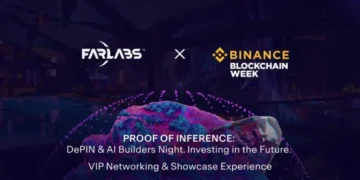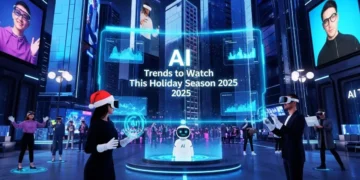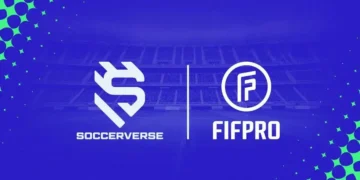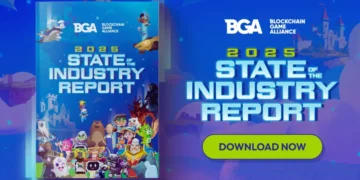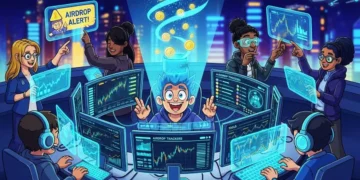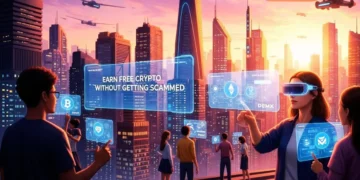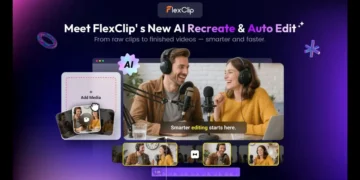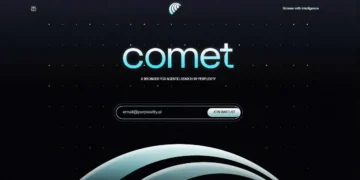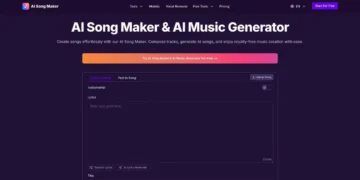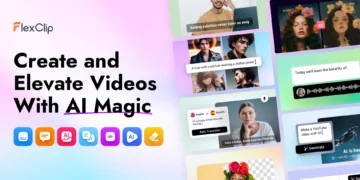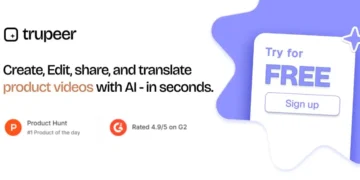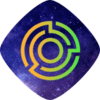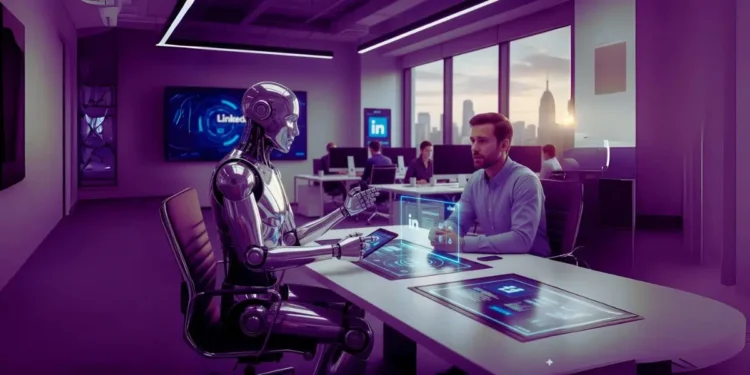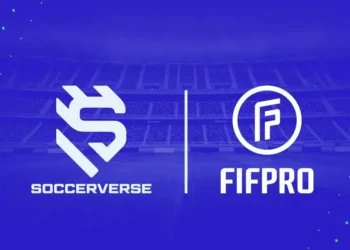The AI-powered hiring platform landscape is undergoing a seismic shift. In September 2025, OpenAI announced its ambitious entry into the recruitment technology space with a platform designed to fundamentally transform how businesses connect with talent. This move positions the ChatGPT maker in direct competition with LinkedIn, the established professional networking giant owned by Microsoft—OpenAI’s largest investor .
But what does this mean for the future of recruitment? How will OpenAI’s jobs platform change how you find talent or your next career opportunity? As AI continues to disrupt traditional job markets, understanding these developments becomes crucial for professionals, HR teams, and organizations worldwide.
The platform represents more than just another job board—it’s a comprehensive ecosystem that combines AI-powered candidate matching with specialized certification programs through the OpenAI Academy. With partnerships already in place with major employers like Walmart and John Deere, plus a goal to certify 10 million Americans by 2030, OpenAI is making a substantial commitment to shaping the future of work .
The Rise of AI Recruitment Platforms
In an environment where talent acquisition demands speed, engagement, and measurable ROI, the traditional recruitment giants are under pressure. Enter the OpenAI AI-powered hiring platform—the Silicon Valley powerhouse’s bold move to redefine how organizations attract, assess, and hire the right people. As recruitment becomes more competitive, businesses are searching for every advantage to reduce time-to-hire, lower costs, and boost retention. That’s exactly the promise OpenAI is serving up for 2025 and beyond.
How will AI-powered matching transform the hiring experience? And can any recruitment platform really take on LinkedIn’s decades-long dominance? Let’s dig in.
Why an AI Recruitment Agency Is the Future of Hiring
A New Era: How AI Agencies Outperform Traditional Recruitment
Forget about sifting through stacks of resumes or relying solely on keyword hits. Today’s AI recruitment agency solutions leverage machine learning to analyze talent, match skills to roles, and even predict long-term employee success rates. For recruitment and HR leaders, this means higher engagement, optimized workflows, and a dramatically improved candidate experience.
Faster, more targeted shortlisting saves valuable recruiter hours.
Predictive analytics reduce turnover—boosting retention and candidate fit.
Hyper-personalized job recommendations yield measurable engagement.
As a decision-maker, what would a faster fill rate mean for your bottom line? Can you afford to let competitors outpace you in securing top-tier candidates?
The Vision Behind OpenAI’s Jobs Platform
AI-Powered Matching Technology
At the core of OpenAI’s hiring platform is sophisticated artificial intelligence designed to create perfect matches between companies and workers. Unlike traditional job platforms that rely heavily on keyword matching and manual searches, OpenAI’s system promises to understand the nuanced needs of employers and the comprehensive capabilities of job seekers .
Fidji Simo, CEO of Applications at OpenAI, emphasizes that the platform will feature “knowledgeable, experienced candidates at every level, and opportunities for anyone looking to put their skills to use” . This approach addresses a critical pain point in today’s hiring processes—the difficulty employers face in finding candidates with specific AI fluency and workers’ challenges in demonstrating their relevant skills.
Commitment to Diverse Organizations
A distinctive aspect of OpenAI’s jobs platform is its dedicated focus on serving organizations beyond just large corporations. The platform will include “a track dedicated to helping local businesses compete, and local governments find the AI talent they need to better serve their constituents” .
This strategic direction acknowledges that AI transformation isn’t just happening at tech giants—it’s affecting businesses and public institutions of all sizes. For example, the Texas Association of Business plans to use the platform to connect thousands of Texas employers with talented professionals who can help modernize their operations .
OpenAI Certifications and Academy: Building AI Fluency
Structured Learning Pathways
Complementing the hiring platform, OpenAI is expanding its OpenAI Academy to offer certifications for different levels of AI fluency. These range from “the basics of using AI at work all the way up to AI-custom jobs and prompt engineering” .
What makes these certifications particularly innovative is their delivery method. Learners can prepare for certifications using ChatGPT’s Study mode, which transforms the chatbot into an interactive teacher that questions, hints, and provides feedback instead of simply giving direct answers . This approach ensures that certification holders have genuinely internalized their skills rather than merely memorizing answers.
Industry Partnerships and Recognition
The certification program gains substantial credibility through OpenAI’s partnership with Walmart, the world’s largest private employer. John Furner, CEO of Walmart U.S., acknowledges the value of this initiative: “By bringing AI training directly to our associates, we’re putting the most powerful technology of our time in their hands—giving them the skills to rewrite the playbook and shape the future of retail” .
This employer endorsement is crucial for establishing the real-world value of OpenAI’s certifications. With studies showing that AI-savvy workers are more valuable, productive, and better paid than those without AI skills, these certifications could become significant differentiators in the job market .
Table: OpenAI Certification Levels
| Level | Focus Area | Potential Applications |
|---|---|---|
| Basic | Fundamentals of using AI at work | Everyday productivity enhancement |
| Intermediate | Specialized AI tool proficiency | Department-specific implementations |
| Advanced | Prompt engineering and AI customization | Complex problem-solving and optimization |
| Expert | AI system design and implementation | Strategic AI integration and innovation |
Competitive Landscape: How OpenAI Challenges LinkedIn and Others
Direct Competition with LinkedIn
OpenAI’s entry into the recruitment space creates a fascinating competitive dynamic with LinkedIn, which was co-founded by Reid Hoffman—one of OpenAI’s earliest investors . Despite Microsoft’s substantial investment in OpenAI (reportedly $13 billion), the relationship has become increasingly complex, with Microsoft formally labeling OpenAI as a competitor in certain domains .
The competition extends beyond job matching to include learning platforms. While OpenAI Academy offers certifications focused specifically on AI fluency, LinkedIn Learning provides a broader range of professional development courses. However, with AI skills becoming increasingly valuable, OpenAI’s specialized approach may gain significant traction .
Comparison with Other AI Recruiting Tools
The AI recruiting tools market has expanded dramatically in recent years. Platforms like Juicebox (PeopleGPT), Humanly, and Canditech already offer sophisticated AI-powered candidate matching, resume screening, and interview automation .
However, OpenAI’s hiring platform differs in several key aspects:
Integration with ChatGPT: Direct preparation for certifications within the ChatGPT interface
Scale of ambition: Goal to certify 10 million Americans by 2030
Elite partnerships: Collaboration with major employers and government entities
AI-native design: Built from the ground up using OpenAI’s advanced AI capabilities
These differentiators could position OpenAI uniquely in the competitive landscape of AI recruiting software.
Impact on the Job Market: Disruption and Opportunity
Addressing White-Collar Job Disruption
There’s undeniable irony in OpenAI—a company whose technology has accelerated AI disruption of traditional jobs—creating a platform to help workers adapt to this new reality. As Anthropic CEO Dario Amodei has noted, AI could eliminate up to 50% of entry-level white-collar jobs before 2030 .
This disruption particularly affects Gen Z workers who would typically fill these entry-level positions. Research from Stanford University’s Digital Economy Lab shows that early-career workers (ages 22-25) in AI-exposed fields like software development and customer service have seen steep declines in employment .
OpenAI’s jobs platform potentially addresses this challenge by helping workers develop AI fluency and connect with employers seeking these specific skills. As Simo acknowledges, “At OpenAI, we can’t eliminate that disruption. But what we can do is help more people become fluent in AI and connect them with companies that need their skills, to give people more economic opportunities” .
The Emergence of the “Superworker”
Industry analyst Josh Bersin describes how AI transformation is creating what he calls the “Superworker effect”—where AI automates many tasks and analytical activities, forcing individuals to upskill to remain relevant . In this new environment, jobs are becoming less about performing specific tasks and more about broader accountability and AI management.
For example, a video editor might evolve into an AI-powered video producer who focuses on storyline, timing, and music selection while AI handles the technical editing. Similar transformations are happening across HR, marketing, publishing, and finance functions .
OpenAI’s hiring platform and certifications appear designed to facilitate this transition toward AI-powered roles where humans focus on creativity, strategy, and managing AI systems rather than performing tasks that AI can automate.
Table: Traditional Roles vs. AI-Powered Roles
| Traditional Role | AI-Powered Evolution | Key Skill Additions |
|---|---|---|
| Customer Service Representative | AI Support Specialist | Prompt engineering, AI system management |
| Content Writer | Content Strategist | AI content optimization, multi-platform distribution |
| Data Analyst | AI Insights Manager | AI interpretation, strategic recommendation development |
| HR Generalist | Talent Experience Manager | AI recruitment tool optimization, data-driven hiring |
Challenges and Considerations for OpenAI’s Platform
Data Scale and Quality Requirements
As Bersin points out, building an effective AI-powered hiring platform requires “amassing a huge amount of job candidate data (that’s every working-age person in the world)” . This presents a significant challenge for OpenAI, which doesn’t currently have the professional graph that LinkedIn has built over decades.
Other companies like Eightfold, SeekOut, and Beamery have also been working on AI-powered talent matching, demonstrating the complexity of creating accurate and unbiased matching systems . OpenAI will need to overcome these same challenges to deliver on its promise of perfect matches between companies and workers.
Trust and Bias Considerations
For employers to adopt OpenAI’s hiring platform, they’ll need to trust that candidates certified through the OpenAI Academy genuinely possess the promised skills. Additionally, the platform must address potential biases in its AI systems to ensure fair and equitable hiring recommendations .
These challenges are particularly significant given increased scrutiny of AI systems in hiring processes. OpenAI will need to be transparent about its approaches to mitigating bias and ensuring the validity of its matching algorithms and certifications.
Implementation Timeline and Adoption
While an OpenAI spokesperson indicated that the company expects to launch the service by mid-2026 , achieving widespread adoption will take time. The platform must attract sufficient numbers of both employers and job seekers to create a viable marketplace—a classic chicken-and-egg problem for new platforms.
OpenAI’s existing relationships with major employers like Walmart and John Deere may help jumpstart employer adoption, while the certification program could naturally attract job seekers looking to enhance their AI fluency and marketability.
OpenAI Jobs Platform vs. LinkedIn: What’s Different?
The highly-anticipated OpenAI Jobs Platform will help users “find the perfect matches between what companies need and what workers can offer,” according to OpenAI’s CEO of Applications, Fidji Simo. In addition:
A dedicated track for small businesses and local governments seeking AI talent.
Certifications in AI fluency through the OpenAI Academy, creating a measurable upskilling pipeline.
Powerful AI-matching surpasses LinkedIn’s current keyword-based talent matching.
Walmart and other major brands are early launch partners, building credibility and distribution.
What would it mean for your hiring strategy if the world’s leading AI company could certify and filter talent before it ever hits your HR dashboard?
The Data-Driven Impact of AI-Powered Hiring
Enhanced Precision and Speed with AI
The new OpenAI AI-powered hiring platform exploits advanced data analytics—machine learning, NLP, and even multimodal data analysis (combining CVs, assessments, and interviews) for holistic screening. Recruitment in 2025 isn’t just about speed; it’s about precision.
Explainable AI models enable recruiters to see exactly why candidates rank high or low, supporting fair and transparent hiring.
Resume scoring AI provides unbiased, auditable results—essential for compliance and trust.
Video interview analysis can now recognize tone, expressions, and red flags that traditional recruiters may miss.
Do you trust current recruitment software to truly identify your best fit? Or is it time to push for a solution backed by real AI experience?
AI Recruitment Agency: Delivering Measurable ROI
AI recruitment agencies deliver measurable benefits:
Time-to-hire is reduced by 30–50%.
Hiring costs drop through automation and streamlined workflows.
Enhanced candidate experience translates to higher acceptance and retention rates.
For marketing and HR execs chasing engagement and ROI, these numbers are impossible to ignore.
Trends Shaping AI Recruitment Platforms in 2025
Hyper-Personalized Recruitment
No more one-size-fits-all job lists. AI recruitment agencies can deliver smart job recommendations based on skills, personality, and aspirations—not just a static CV. For candidates, this is like having a personal career coach in your pocket, at scale.
Are your job postings reaching the candidates that actually fit, or are you still casting a wide net and hoping for the best?
AI-Powered Diversity in Hiring
Artificial intelligence can support unbiased algorithms, blind resume screening, and fairer selection processes—ensuring focus remains on skills and real qualifications. But, it’s crucial to audit for bias and ensure training data represents diversity.
Predictive Analytics and Retention
The best AI-driven hiring platforms don’t just fill roles—they forecast a candidate’s potential performance and cultural fit by analyzing historic data. This reduces guesswork and builds a foundation for long-term engagement.
Video Interviewing Meets AI
AI-powered video interviewing has evolved well beyond scheduling—it now interprets language, tone, and expression for richer insights. This helps reduce both false positives and negatives, supporting fair and accurate candidate assessment.
OpenAI Platform Case Study: Walmart’s AI Literacy Push
A real-world win: Walmart, one of the largest private U.S. employers, is partnering with OpenAI to certify over 10 million Americans in AI fluency by 2030, as part of the White House’s AI literacy initiative. The goal? Equip workers to not just survive, but thrive, alongside next-gen automation.
The Future of AI-Powered Hiring
Beyond Job Matching: Continuous Learning and Development
The most compelling long-term vision for OpenAI’s hiring platform might extend beyond initial job matching to encompass continuous professional development. Bersin suggests that “AI Agents as Professional Development Tools” represent the future of corporate learning .
In this model, AI systems would serve as personalized tutors that “knows what we need to learn, teaches us, and coaches us for success” . This approach aligns perfectly with OpenAI’s capabilities and could eventually position the platform as both a hiring solution and a continuous development ecosystem.
Integration with Broader AI Infrastructure
OpenAI’s hiring platform may eventually integrate with the company’s broader AI initiatives, including its reported work on a browser and social media app . This could create a comprehensive ecosystem where professional networking, skill development, and job matching seamlessly connect.
Additionally, OpenAI’s involvement in the $500 billion Stargate project focused on AI infrastructure suggests potential for increasingly sophisticated hiring and development tools leveraging advanced AI capabilities .
Evolution of Recruitment Marketing
As AI-powered hiring platforms become more sophisticated, they may transform how employers approach recruitment marketing. Rather than simply posting job descriptions, companies might use AI to identify potential candidates based on their demonstrated skills (through projects and certifications) rather than just their stated qualifications .
This shift could make recruitment more efficient and potentially more equitable by focusing on verified capabilities rather than pedigree or self-reported experience.
Conclusion
OpenAI’s announcement of an AI-powered hiring platform represents a significant development in the evolution of recruitment technology. While the platform faces substantial challenges in competing with established players like LinkedIn and specialized AI recruiting tools, its integration with OpenAI’s certification programs and AI capabilities offers unique advantages.
For professionals, developing AI fluency through programs like the OpenAI Academy is becoming increasingly essential. As the job market evolves toward AI-powered roles, those who can effectively leverage AI tools will likely have significant advantages in finding fulfilling and well-compensated work.
For organizations, staying informed about these developments is crucial for strategic workforce planning. The potential for more efficient candidate matching and access to workers with verified AI skills could substantially impact hiring outcomes and organizational performance.
What steps are you taking to develop your AI skills or prepare your organization for AI-powered hiring? Share your thoughts in the comments below, and consider subscribing to our newsletter for more insights on the future of work and AI transformation.
FAQs
1. When will OpenAI’s hiring platform launch?
OpenAI expects to launch the platform by mid-2026, according to a company spokesperson .
2. How will OpenAI’s platform differ from LinkedIn?
While both platforms focus on connecting professionals with opportunities, OpenAI’s hiring platform emphasizes AI-powered candidate matching and integrates with specialized AI certifications through the OpenAI Academy .
3. What are OpenAI Certifications?
OpenAI Certifications are credentials offered through the OpenAI Academy that verify different levels of AI fluency, ranging from basic AI usage to advanced skills like prompt engineering and AI customization .
4. How much will OpenAI’s hiring platform cost?
Pricing details haven’t been announced yet. However, the certification program will be offered through the OpenAI Academy, which currently provides free resources .
5. Will OpenAI’s platform completely replace human recruiters?
No. The platform is designed to augment human recruiters by improving candidate matching and verifying skills, but human judgment will still be essential for final hiring decisions .
6. What companies are partnering with OpenAI on this initiative?
OpenAI has announced partnerships with Walmart, John Deere, Accenture, Boston Consulting Group, and various government and community organizations .
7. How will OpenAI prevent bias in its AI matching algorithms?
While specific technical details haven’t been released, addressing bias will be crucial for the platform’s success. OpenAI will likely use various fairness techniques and transparency measures to mitigate algorithmic bias .
8. Can individuals without AI experience use this platform?
Yes. The platform is designed to help people at all levels of AI fluency, and the OpenAI Academy offers resources for beginners through advanced users .
9. Will the platform be available globally?
Initial announcements focus on certifying “10 million Americans by 2030,” suggesting a U.S. focus initially, but global expansion is likely given OpenAI’s international presence .
10. How can I prepare for using OpenAI’s hiring platform?
Developing your AI skills through various learning resources and staying informed about platform developments will help you prepare effectively for when the platform launches.

